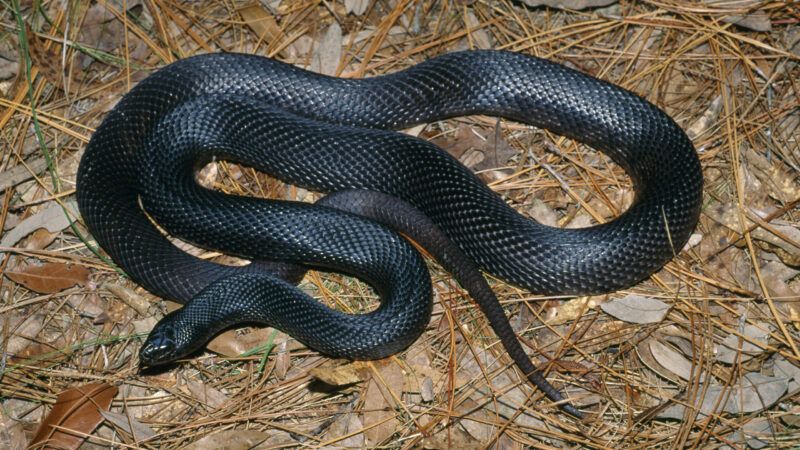States and Landowners Are Key to Recovering Rare Species. Stop Penalizing Them.
Federal rules under the Endangered Species Act often treat landowners as adversaries. Recent court victories suggest a better way forward.

When Gray Skipper set out to conserve thousands of acres of his Alabama timberland, he never imagined being met with a federal penalty. In 2020, the U.S. Fish and Wildlife Service designated 30,000 acres of Skipper's property as critical habitat for the black pine snake—an elusive species seen there only once in the past 25 years. The designation undermined his family's ability to manage their land, reduced property values, and cast doubt on whether their conservation efforts would continue.
Nearly two-thirds of listed species rely on private land, but too often, implementation of the Endangered Species Act—passed in 1973—punishes the very people whose help is most needed to recover a species. Fortunately, some recent legal victories suggest that this tide may be turning and presenting a better approach to recovering rare wildlife that respects property rights, empowers states, and rewards landowners for stewardship.
Last month, in response to a lawsuit filed by the Pacific Legal Foundation, a federal district court ruled that the Fish and Wildlife Service's designation of the Skippers' land as critical habitat was unlawful. The court concluded that the agency acted arbitrarily, relying on scant evidence of the snake's presence, and ignored the $180 million in economic impacts the designation could impose on landowners. The decision restores the family's ability to manage their land and sends the message that habitat designations must be grounded in science, not speculation.
The second breakthrough came as a result of a lawsuit filed by the Property and Environment Research Center (PERC), alongside the Rocky Mountain Elk Foundation. Our groups challenged the agency's so-called blanket 4(d) rule, which slapped the strictest restrictions on every listed species, regardless of whether its status improves. The rule effectively erased the distinction Congress intended between threatened and endangered species, reducing the flexibility to tailor regulations in ways that would encourage proactive recovery efforts.
In response to our lawsuit, the Fish and Wildlife Service announced last month that it will rescind the blanket rule and instead craft species-specific 4(d) rules. These rules allow the agency to adapt regulations to the actual needs of a species, permitting activities that benefit recovery while prohibiting those that cause real harm. This commonsense shift means that threatened species will no longer carry the same automatic regulatory burden as endangered ones, restoring incentives for recovery.
States, too, are often penalized for success. Populations of grizzly bears in the northern Rockies have rebounded far beyond recovery goals, yet the species remains listed and under full federal control. States that have invested heavily in conservation are still blocked from managing the bears, even as conflicts with ranchers and communities increase. If improvement brings no relief from regulation, there's little incentive for states to continue to push the species toward recovery.
With an approach like this, it's not surprising that, under the Endangered Species Act, only 3 percent of listed species have recovered and been delisted. According to the Fish and Wildlife Service's own recovery projections, at least 300 listed species were expected to have recovered by now, but so far only 57 have.
Private landowners and states are the frontline stewards of wildlife habitat. When their efforts are rewarded, species can thrive. When they are punished, species suffer. Punishing landowners for good stewardship is a recipe for conflict and the continued decline of rare species.
If we want to see more species move off the endangered list, we must stop penalizing those who hold the keys to their recovery.


Show Comments (13)